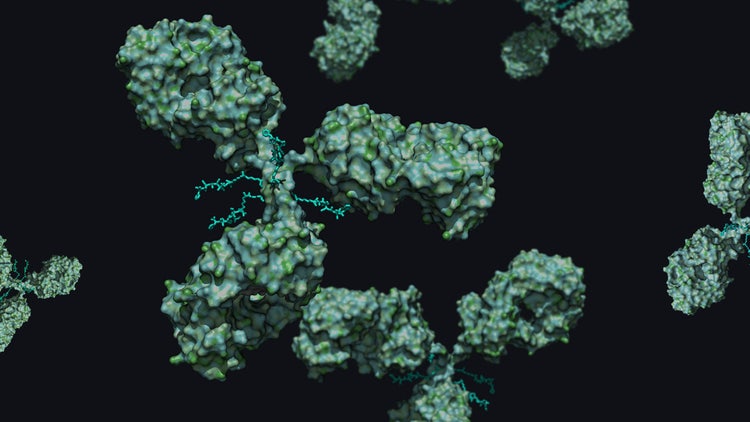Beyond HIC: Native RP Chromatography's Growing Role in ADC Characterization

Mihir Thakar, Global Product Manager - Phenomenex, shares his expertise in characterizing antibody-drug conjugates (ADCs). He discusses the key drivers of the ADC market, the limitations of the traditional hydrophobic interaction chromatography (HIC) method and how Biozen Native Reverse Phase (RP) columns paired with high-resolution mass spec (HRMS) are setting new standards for precision, scalability and efficiency in ADC characterization.
1. What factors are driving the growth in the ADC market and how is this reflected in recent developments?
The ADC market is rapidly becoming a major force in oncology and it is often referred to as a “biological missile” due to the targeted power against the cancer cells. We have seen many new ADCs therapeutics moving through clinical trials, highlighting the massive pipeline momentum. This growth is fueled by two key market drivers: increased regulatory pressure driving the adoption of the HRMS and greater global accessibility to the advances in analytical tools. Inflection points aligned with the ADC approval, like Adcetris, Enhertu and Tivdax, have each sparked a new wave of trials. This highlights a thriving ADC market with more innovation and demands for robust analytical tools than we have seen and experienced in the past, such as HIC.
2. What is the new chromatographic separation approach developed for ADCs and how does it improve upon traditional methods like HIC?
The Biozen Native RP-1 and RP-5 columns, a new chromatographic separation approach, have been designed keeping ADCs characterization in mind. This approach is a non-porous column made of silica-based carbon with a proprietary, tuned polarity surface. This tuned polarity allows mild reverse phase conditions, which are very important to maintain the native confirmation of the ADCs and get the accurate drug-to-antibody ratio (DAR). Additionally, the Biozen RP columns are HRMS compatible and, compared to traditional HIC, eliminate the need for desalting and extensive fractionation of the peaks in between to confirm the identity of the DAR species.
The Biozen Native RP-1 and RP-5 columns are different in their polarity and address the different ADCs with respect to the molecules' different hydrophobicity. RP-1 columns are suitable for resolving the intact DAR and isomers characterization of the very low to moderate hydrophobic indices, while RP-5 columns are suited for more complex, highly hydrophobic ADCs. Unlike HIC, these columns cover the entire spectrum of ADC separation, offering greater resolution and minimal mass error.

3. How does the Biozen Native RP-5 column coupled with HRMS support accurate DAR analysis for ADCs?
So, with the Biozen Native RP-5 column, we’re able to separate and characterize different DAR species, like DAR4 and DAR6, without needing to desalt or reduce the amount of antibody. We see for ADCs, the experimental DAR values are almost identical to what’s reported in the literature, which confirms the method's accuracy. The HRMS setup is optimized for native-friendly conditions, so we preserve the structure of the ADCs while getting high-resolution mass spec data. When we overlay the extracted ion chromatogram (XIC), we see clear separation and reproducibility with the deconvoluted spectra showing less than 50 PPM error. Overall, this approach highlights the robustness of the Biozen RP-5 column and the strength of the analytical workflow for comprehensive ADC characterization. Once we’ve matched the DAR species to their LC-UV peaks, we can transfer the method to LC-UV.

4. How does the Biozen Native RP method enable correlation between HRMS and LC-UV profiles for ADC analysis?
The Biozen Native RP method is a great tool for ADC characterization because it lets us correlate the HRMS and LC-UV detection. By analyzing ADCs on RP-1 or RP-5 columns, researchers can first identify and confirm DAR species using HRMS. Once these peaks are matched to their corresponding UV280 signals, this easily allows the transfer to the LC-UV method. Then you don't need to do the mass spec all the time for batch release or further routine types of screening. The fingerprinting profile between LC-UV and XIC is very consistent, making peak identification reliable. In this case, the LC-UV setup supports high throughput, making it ideal for QC environments. Overall, this approach gives us a scalable, precise way to analyze ADCs while preserving their native structure.
Listen to the full webinar here to explore an analytical approach for complex therapeutics, focusing on detailed characterization and precision to ensure a consistent, high-quality drug product.

Characterizing Antibody-Drug Conjugates Through Innovative Analytical Solutions
